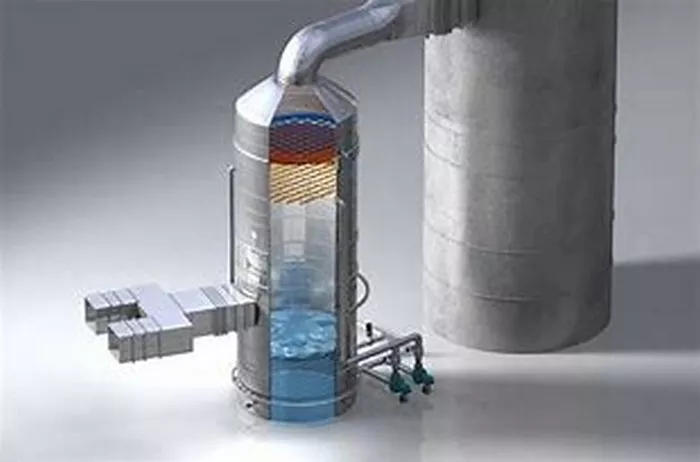Indoor air quality (IAQ) has become a growing concern in recent years. Unlike outdoor pollution, which is often regulated and monitored, indoor air can harbor a surprising amount of contaminants. These contaminants can range from common allergens like dust and pet dander to volatile organic compounds (VOCs) emitted from building materials and cleaning products. Exposure to these pollutants can exacerbate respiratory problems like asthma and allergies, and can even contribute to headaches, fatigue, and other health issues.
This is where air scrubbers come in. Air scrubbers are air purification devices designed to remove a wide range of airborne contaminants from your indoor environment. By actively filtering the air, air scrubbers can significantly improve your indoor air quality, creating a healthier and more comfortable breathing environment.
How Air Scrubbers Work
The basic principle behind air scrubbers is straightforward. They draw in contaminated air through a fan, pass it through a series of filters or other cleaning mechanisms, and then release clean air back into the room. This filtration process effectively traps and removes contaminants, leaving you with fresher, healthier air.
There are two main types of air scrubber technologies:
1. Filtration Systems: These use a combination of filters to capture different types of pollutants. High-Efficiency Particulate Air (HEPA) filters are highly effective at trapping dust, pollen, pet dander, mold spores, and other airborne particles. Activated carbon filters target gaseous pollutants like VOCs and odors.
2. Ionization Technology: This technology uses electrically charged particles (ions) to neutralize airborne contaminants. The ions attach themselves to pollutants, making them clump together and easier to capture by the collector plates or filters within the air scrubber.
See also: Floor Sweeping: A Simple Yet Essential Cleaning Task
What Air Scrubbers Remove
Air scrubbers are effective at removing a wide range of airborne contaminants, including:
1. Particulate matter (PM): This includes dust, pollen, pet dander, mold spores, smoke, and other microscopic particles that can irritate the respiratory system.
2. Volatile organic compounds (VOCs) and odors: VOCs are gaseous chemicals emitted from various sources such as paints, cleaning products, and building materials. Air scrubbers with activated carbon filters can effectively reduce these gaseous pollutants and unpleasant odors.
3. Bacteria and viruses (in some models): Some air scrubbers utilize technologies like ultraviolet (UV) light or specialized filters to inactivate or capture bacteria and viruses.
Benefits of Using Air Scrubbers
There are numerous benefits to using air scrubbers in your home or business. Here are some of the key advantages:
1. Improved respiratory health: By removing allergens, dust, and other irritants from the air, air scrubbers can significantly improve respiratory health, especially for people with allergies and asthma.
2. Reduced exposure to harmful pollutants: Air scrubbers help reduce exposure to VOCs, smoke, and other harmful pollutants that can have a negative impact on your health and well-being.
3. Deodorization of indoor spaces: Air scrubbers with activated carbon filters can effectively eliminate unpleasant odors from cooking, smoke, pets, and other sources.
Applications of Air Scrubbers
Air scrubbers offer a variety of applications in both residential and commercial settings. Here are some of the most common uses:
1. Residential: Homes with pets, allergies, or concerns about indoor air quality can benefit greatly from air scrubbers.
2. Commercial: Offices, healthcare facilities, and other commercial spaces can use air scrubbers to improve air quality for employees and customers. This is especially important in environments where allergens or dust may be prevalent.
3. Industrial: Industrial facilities often deal with hazardous fumes, dust, and other airborne contaminants. Heavy-duty air scrubbers are essential for removing these pollutants and creating a safe working environment.
See also: What is the Right and Best Vacuum
Choosing the Right Air Scrubber
When choosing an air scrubber, it’s important to consider several factors to ensure you get the right unit for your needs. Here are some key considerations:
1. Air quality concerns: Identify the primary contaminants you want to target (dust, allergens, VOCs, etc.) to choose an air scrubber with the appropriate filtration technology.
2. Room size: Air scrubbers are rated for specific room sizes. Choosing the right size ensures the unit can effectively circulate and clean the air throughout the space.
3. Noise level: Air scrubbers can generate noise while operating. Consider noise levels when selecting a unit for a bedroom or other quiet area.
4. Filter replacement needs: Look for air scrubbers with easily replaceable filters to ensure ongoing effectiveness and maintain optimal air quality.
Conclusion
Air scrubbers are a valuable tool for improving indoor air quality and creating a healthier breathing environment. By removing a wide range of contaminants, air scrubbers can help alleviate allergy and asthma symptoms, reduce exposure to harmful pollutants, and eliminate unpleasant odors. It’s important to remember that air scrubbers are not a replacement for proper ventilation. Regularly opening windows and doors allows for fresh air exchange, which is crucial for maintaining overall indoor air quality.


